Lake Como: My favorite lake in the world is Italy’s watery exotic dancer
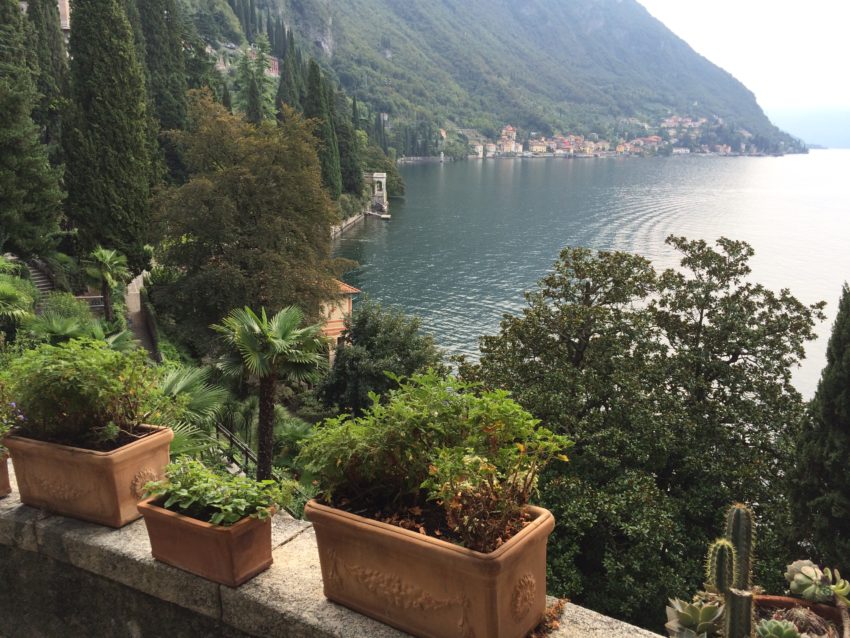
MENAGGIO, Italy — The Italian Alps come down around Lake Como like giant, jagged claws clutching a basin of cool, clean water. In September, the mountains don’t have snow but they’re still majestic in their height, their steepness, their proximity to my favorite lake in the world. Also, I can’t help staring at their color. They’re covered in green forest. Above the tree line, the brown rock sticks out high above the lake as if to protect it from unwanted foreign objects — like jet skis, yachts and drunk Texans.
This is my view as I’m sitting at my hotel pool along the lake. I went to India in March to learn the meaning of perfect bliss. I may have found it on Lake Como: reading the Italian sports paper next to a beautiful pool in front of me and a gorgeous lake behind me after spending the day walking through a villa garden. I just had ravioli a few feet from the water. The summer’s suffocating heat has left, replaced by high 70s with the sun peeking through the high clouds.
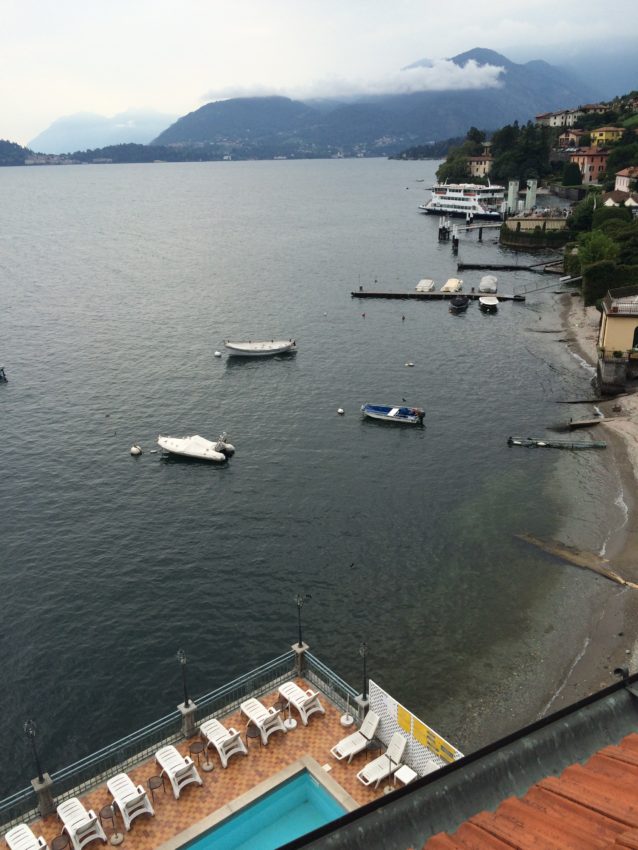
Traveling overland a lot I’ve seen some remarkable lakes. Lake Zurich and the Swiss Alps. Khovsgol Nuur (Lake) and northern Mongolia’s unspoiled beauty. Popradske pleso (Lake) and Slovakia’s High Tatras mountain range. Never have I seen a lake as beautiful as Lake Como. It is Italy with a Swiss twist. Take the convenient and romantically slow ferry back and forth across the lake and the architecture of the villages reminds you of Switzerland which lies just over the first line of mountains. But disembark and spend time with the people. The laid-back lifestyle, values and food make Lake Como very Italian.
As a sportswriter in Denver, I used to come here and vegetate after covering the grueling three-week Tour de France. Even in late July and early August, Lake Como is not too crowded to enjoy. The lake is 56 square miles and 28 miles long. With 18 towns spread along the shoreline, it isn’t hard to find privacy. I’ve stayed in Lenno, which still feels like an old Italian village but has a terrific sandy beach, and Tremezzo, where lakeside cafes and clifftop restaurants give it an air of sophistication, of style, of Campari on ice and designer sunglasses.

They are all on the same western shore as Laglio where George Clooney has his 18th century Villa Oleandra. I pass the gorgeous, garden-laden, castle-like mansion, complete with two turrets and stone walkways to the lake, when I take the ferry to villages. If I had a euro for every time a woman asked me, “Tell George hi for me,” I could be Clooney’s neighbor. He’s also considered one of the nicest guys in town. On one trip to Lenno, a woman I met on the beach told me Clooney often throws a big party for the town of Laglio. It’s not for his Hollywood friends and agents. It’s for the cobblers and the bakers and the butchers and the waiters. He’s not the town’s prized possession. He’s one of the locals.
So go ahead and look. Just don’t touch. In April, Laglio mayor Roberto Pozzi established a 600-euro fine for anyone setting foot uninvited on Clooney’s property or disturbing him in any way. Still, Clooney is so fed up with paparazzi, he’s considering an offer to sell for $100 million. He bought it in 2001 for $10 million. Talk about “A Perfect Storm.”
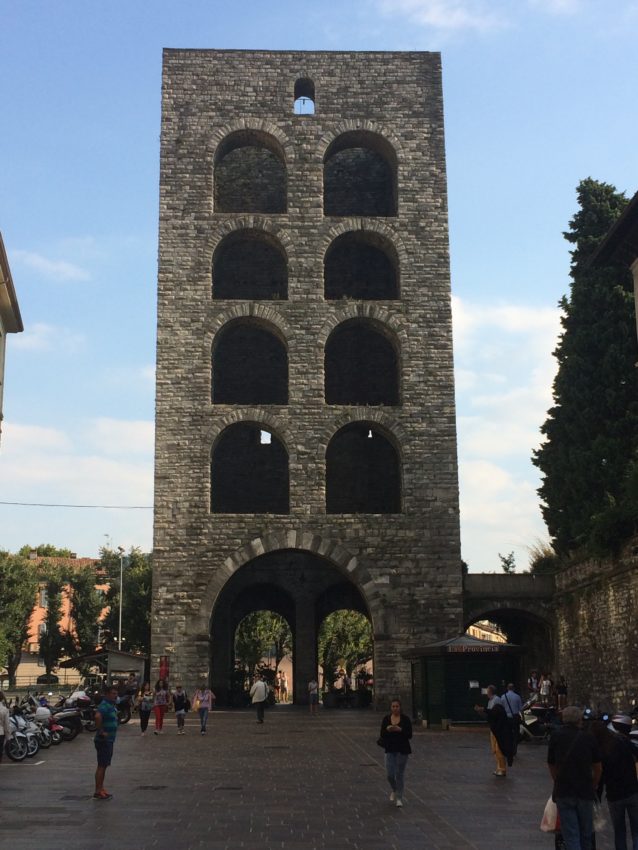
I started my weekend journey in the town of Como, one of the most underrated cities in Italy. It’s oft used as a diving board to the lake villages but it’s well worth a night or two. Inside the 12th century city walls, vast piazzas are scattered near one of the cleanest and most majestic ports I’ve ever seen. The world’s ports often resemble garbage dumps and oil spills. Como’s is as clean as Monaco’s without the yachts.
Hosting me was one John Genzale, an old American newspaper war horse who has had his hand in Italian baseball and taught journalism classes at the American University of Rome. He moved to Como in 2010 and scored a great apartment in the heart of the cobblestone historic center. I spoke to his students a couple of times and told them that one of the joys of travel writing is trips like this: Sitting in old town Como, drinking white wine from Como’s Lombardy region and telling hilarious old stories from our newspaper days.
As the newspaper industry goes the way of the pay phone (my departure had ZIP to do with it), I happily headed to Menaggio. Lake Como is shaped like a long-legged, armless exotic dancer in the throes of a head-rocking orgasm. (Look, I spent a weekend on Lake Como. I’m in the mood, OK?) Menaggio is 22 miles north of Como along the western shore, right above where the pelvic region would be. (SHUT UP! I’LL GET THROUGH THIS!) I learned it’s only an hour as opposed to 2 1/2 by boat. Besides, I’d had enough of tourists nearly capsizing the boat as they rush to the port side to photograph Clooney’s house.
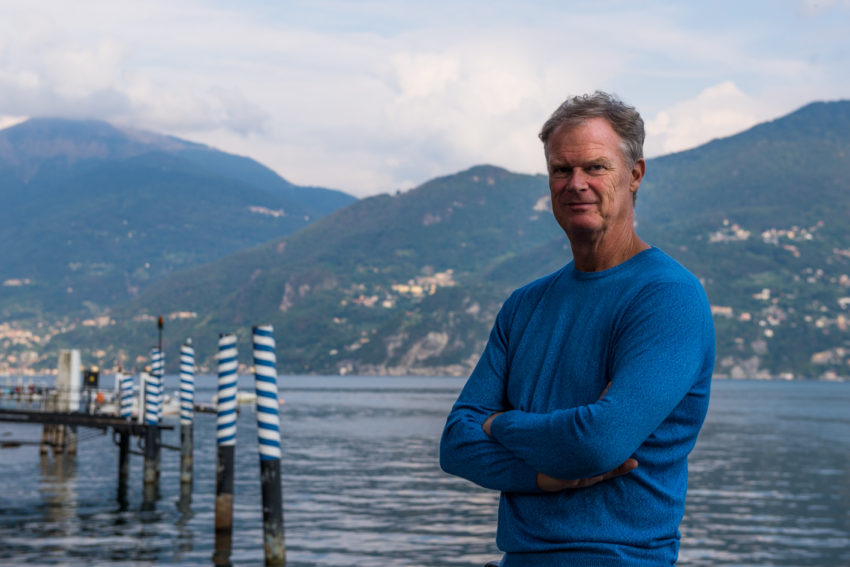
The bus dropped me off next to my Hotel Bellavista. It’s not nearly as boring as the mundane title suggests. For 160 euros a night, I had a fourth-floor flat with a balcony complete with a table overlooking the big swimming pool lined with lanais chairs and the lake just over the railing. It was the perfect spot for a late afternoon aperitivo of local cheese and a sweet white — and cold — Gewurztraminer from just farther north in Alto Adige.
Menaggio comes together at Piazza Garibaldi which seems too large for this town of 3,300 people. It still keeps its quaintness. It’s a cobblestone piazza lined with tasteful cafes, boutiques and public services like a bank and post office. Filling the outdoor seats, all facing the cobalt-blue lake were mostly English and Americans, all of whom seemed incapable of learning the word “Grazie.” A note to all travelers to Italy: Don’t say “Thank you.” Say “Grazie.” Italians are very forgiving of foreigners unwilling to learn a single Italian word in their country — or with my sister from Southern California who kept saying, “Gracias.” But saying “Grazie” will score modest points with the locals and keep people like me from thinking you’re an unwashed, functionally illiterate hillbilly.
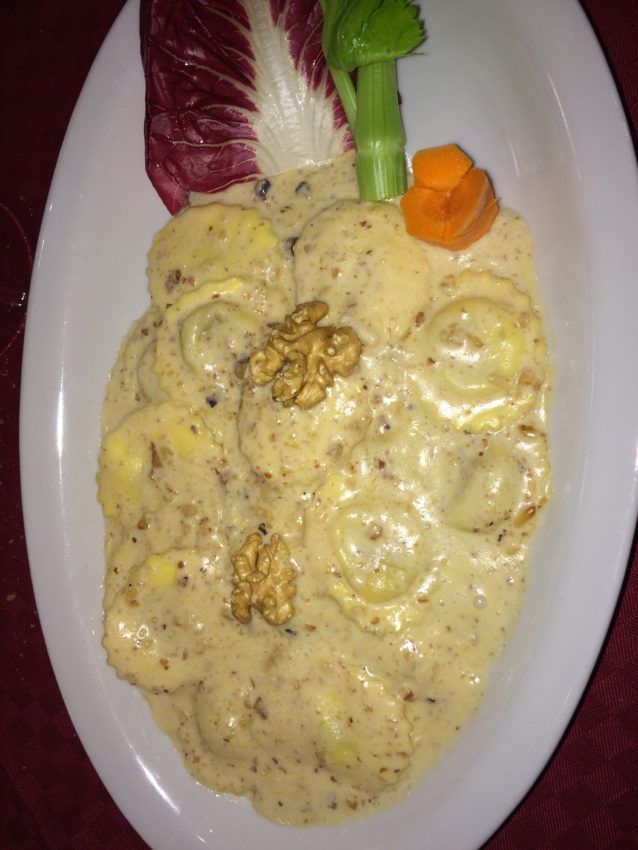
I ignored all the assorted-accented English around me at La Tana del Luccio, a charming little outdoor cafe where I had luscious hand-made ravioli noci gorgonzola: hand-made ravioli filled with a cream nut sauce and covered in thick, melted gorgonzola cheese. As I said, Lake Como is very much Italian.
The beauty of staying on the lake is each town is easily accessible and has its own character. My best definition of freedom is deciding what Italian lakeside village you want to visit on your way to a boat dock. That’s what I did the next day when I took the ferry across the lake to Varenna. It is known to battle Bellagio as the prettiest town on Lake Como. All Americans know Bellagio. It was famous before the gargantuan Bellagio hotel popped up on the Las Vegas Strip in 1998. Today the town’s windy, hilly alleys and pastel-colored buildings are crawling with Americans in ball caps and T-shirts scanning the breadth of the Big Ten Conference. Bellagio, glittery, rich and a bit pretentious, is at the end of a peninsula and sticks into the lake like, appropriately, a middle finger.
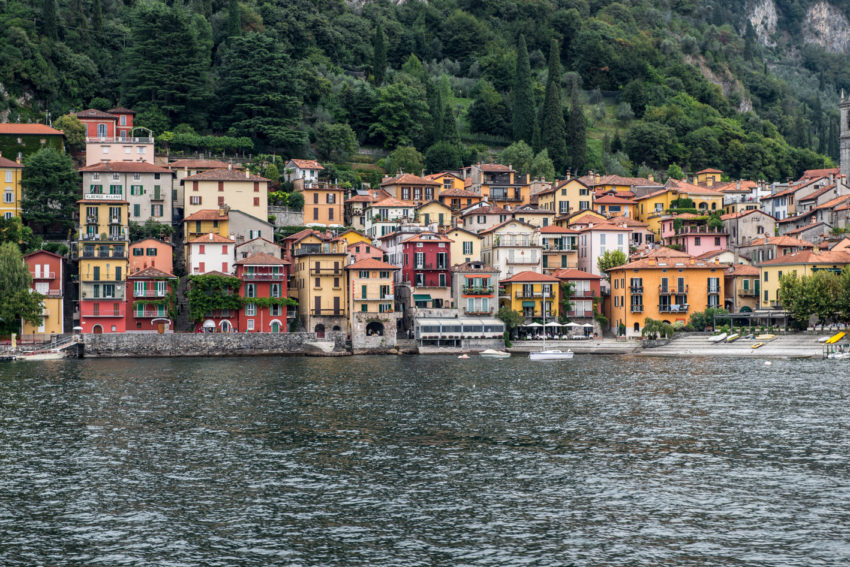
Varenna, meanwhile, spreads lazily along the eastern shore. Getting off the boat, I paid a nominal fee to enter one of Varenna’s many impossibly beautiful villas and walked along a windy, narrow stone path lined with flowers of pink bougainvillea and yellow hibiscus. Palm trees of a dozen varieties shaded the walkway and I ducked under centuries old archways. To my left were cliffs going straight up to the sky. To my right was a lake so clear I could see fish scurrying along under the surface. I could see why Williams Turner came here to paint.
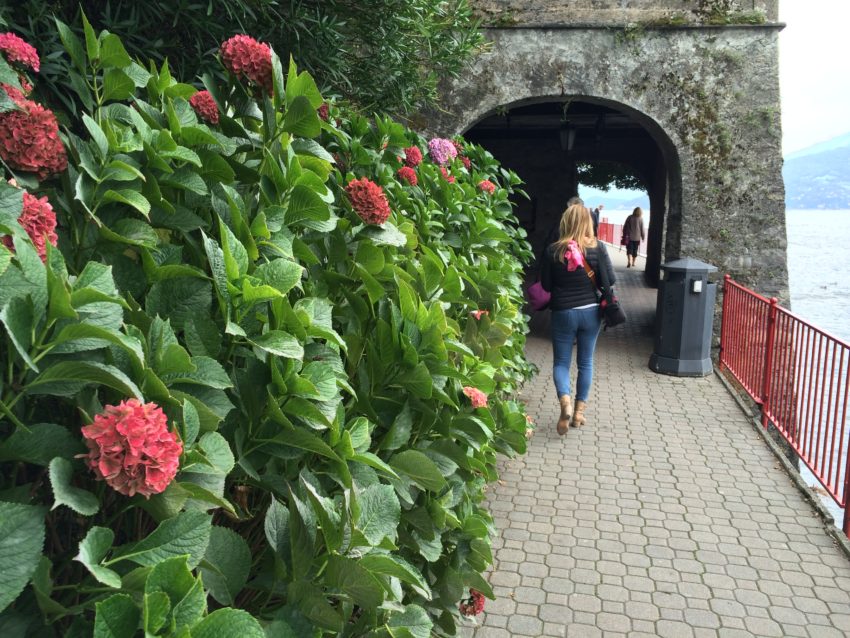
Soon I came across this sprawling mansion. Its facade seemed modest but I walked in and couldn’t believe that Villa Monastero was once a convent. Yes, nuns used this as their home from the 12th century until about 1500 when the nuns, a clerk inside told me, “were being naughty.”
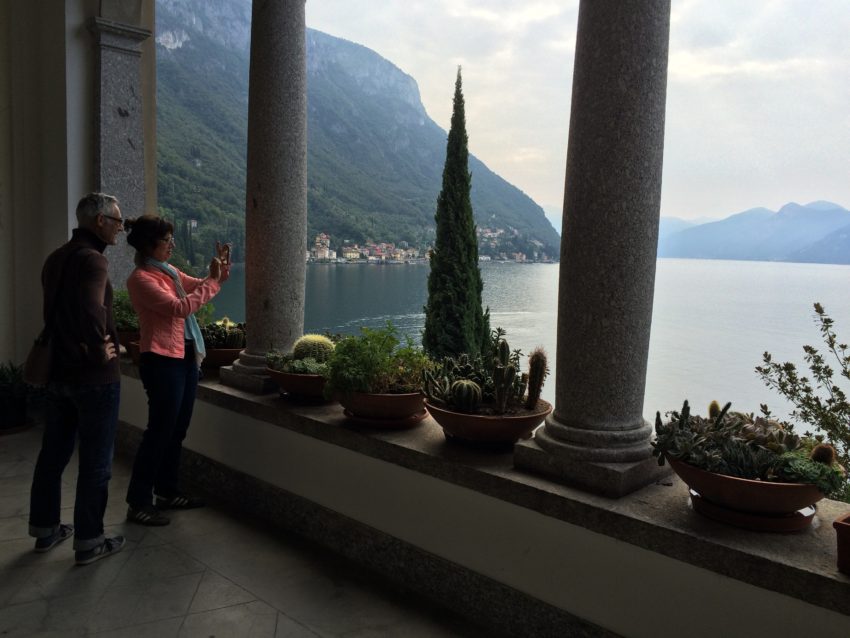
“How naughty?” I asked.
“Everything,” she said.
It was sold to a rich Italian family who had it for 300 years then sold to a German during World War I. It was open to the public in 1940 and today is used for conferences, particularly annual courses run by the Italian Society of Physics. How they get work done with all the distractions is a testament to Italians’ occasional concentration. The rooms have elaborate patterns hand chiseled all over walls. Red velvet covers the floors. Tapestries of prehistoric scenes serve as backdrops. The bathroom with the extra large tub looks like something out of a swinger’s club.
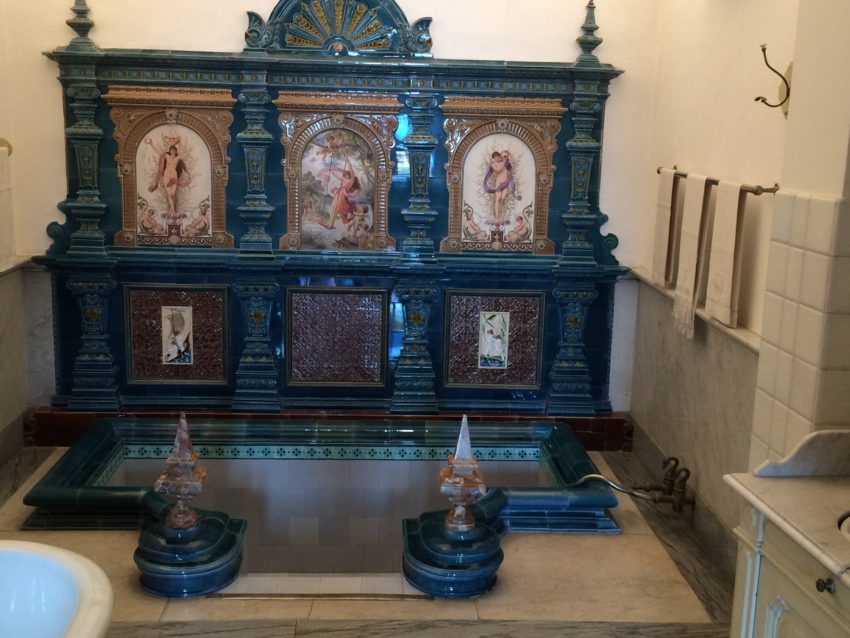
Later I contemplated life on Lake Como in past centuries as I read my paper by the pool. A lone sailboat bobbed in the lake. The only sounds I heard were the water lapping against the shore below me and the seagulls above me. The sun set behind clouds hovering over the Alps beyond.
Fellow expats and I join Italians in a regular chorus about the chaos and dysfunction of Italy. It makes life so hard in areas where in other Western countries it’s so easy. Yet those of us living here have learned to bear with the bad. Lake Como is one of those ways. Beauty. Style. Comfort. Warmth. Flavor. At the end of a long, hot summer, they all win out in the end. Clooney’s price tag is $100 million.

I can see why he may not sell.


September 16, 2015 @ 1:48 am
We’ve gone to Bellagio when we needed to unwind, but this summer we went instead to Lago Maggiore, stayed in Stresa (where Hemingway stayed from time to time), and although Bellagio is still a favorite, Stresa is highly recommended … especially the palacio on Isola di Madre.
September 16, 2015 @ 2:07 am
Thanks Donigan. I’ll keep Stresa in mind.
January 8, 2016 @ 10:25 am
It looks like you had an incredibile trip! I live in Como, and I have just created a website for events and tours around Lake Como. If you’re planning to visit Lake Como again, why don’t you check it out? http://lakecomotravel.com/lake-como/. Thank you!
January 9, 2016 @ 2:30 am
Thanks for the information. I will try to go to Como every year and will definitely look you up next time.
John Henderson